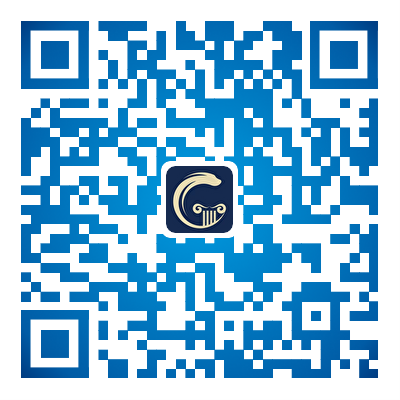The laser holography/shearography testing technique was first seen in the 1970s. Back then, holographic plate was used as the medium to record speckle images. The operation was complex, time-consuming and required heavy labor, which hindered the development of the technique. However, with the rapid development of computers, charge-coupled devices and digital image processing technologies, the laser holography/shearography testing technique gained popularity. This technique is now widely used to detect object deformation in many different fields. For cultural heritage conservation, it can help realize non-destructive, high-precision and real-time testing in full scale. Based on the actual research needs, the test results can be presented in 2D or 3D. It can thus be said that the laser holography/shearography testing technique has provided more diversified testing and evaluation methods for cultural relic conservation and disease study.
Starting from the 21st century, research teams have begun to use the laser holography/shearography testing technique to test and study cultural heritages. The technique records and detects deformations of an object’s surface based on speckle interferometry. It’s now a widely applied and mature non-destructive technique featuring high resolution and easy digital processing.
The laser holography/shearography testing system works with the interference between two laser beams: an ideal reference beam and a scattered beam (object beam) that deflects off an object. The light field of the object beam contains information about object intensity and phase. By collecting and calculating laser holographic speckle interferometry images of the target object before and after the excitation, the corresponding phase information on object deformation can be collected. By studying the 2D stripes or 3D phase distribution that indicate the deformation phase, information about the abnormal structural condition of the object can be obtained. By analyzing this information, it is possible to locate the parts with defects as well as evaluating the severity of the defects.
Development of the laser holography/shearography testing device (Left: principle-based optical path system. Right: portable prototype.)
Laser holography/shearography testing under excitation by infrared thermal loading
To carry out laser holography/shearography testing for defect detection, it is also necessary to design a supporting contactless deformation excitation system besides the laser holography/shearography testing system. Based on different application scenarios, the deformation excitation system can adopt force loading, thermal loading, acoustic loading, or laser irradiation methods. The excitation source should be selected according to the actual target object. For instance, for a regular or reusable target object (such as a regular test sample object), easily quantifiable loading methods with obvious deformation (such as force loading and laser irradiation) can be applied. If the target object is under strict protection (such as cultural relics), then it's necessary to adopt contactless, non-destructive deformation excitation solutions (such as thermal loading and acoustic loading).
Acoustic loading excitation device
In the Joint Laboratory and the joint research project, laser holography/shearography testing will be carried out on defects of cultural relics to obtain information about potential diseases, evaluate the health of cultural relics, and make research achievements on innovative application of the technique.
The project performs laser holography/shearography testing with acoustic excitation. The target objects are mainly murals on wood substrates. There are also other types of protected cultural relics, so the contactless acoustic excitation method is used. The combination of acoustic excitation and laser holography/shearography testing equipment can not only help locate the defective parts of an object, but also evaluate the degree of damage through the collected images, thus providing stronger support for cultural relic conservation and restoration research in a prospective way.
In the testing plan, the laser holography/shearography testing device and the acoustic excitation device can be used independently. Based on the needs, the laser holography/shearography testing device can be used with different deformation excitation methods for different objects. In this research, the laser holography/shearography testing system uses a 532nm, 60mW laser light source (with fiber optic pigtail), a field of view of 8 × 8 cm², and a CCD with a single pixel size of 2.4 x 2.4 μm². By using the multi-function image data processing and testing/monitoring software that comes with the laser holography/shearography testing system, the speckle interferometry images can be captured and processed in real time. The deformation phase testing results obtained can be displayed as 2D stripes or 3D unwrapped images, which is beneficial for evaluating the test results more quickly and directly from multiple perspectives. The acoustic excitation device contains a sound wave generator and a low-distortion speaker equipped with a power amplifier. The intrinsic frequencies of micro-vibration displacements caused by acoustic excitation varies for different objects. Therefore, in this research, the acoustic excitation solution adopts the frequency sweep method for acoustic emission, which ensures that effective excitation can be carried out for different target objects. In addition, the acoustic excitation method makes no direct contact to the target object, and the vibration of the target object attenuates as the sound wave emission gradually stops, which allows for contactless and non-destructive testing and study of mural paintings.
Laser holography/shearography testing with acoustic excitation for cultural relic disease detection (Left: indoor. Right: outdoor.)
The project takes “Ru Ting Murals” from the Palace Museum as the target object for laser holography/shearography testing to provide a full demonstration on the integrated application of the technique. The project has several goals and visions. First, study the image collection methods in cultural relic surface and sub-surface defect testing and the evaluation of defect severity. Second, study more diversified non-destructive excitation solutions. And third, combine the laser holography/shearography testing technique and the non-destructive excitation techniques to create high-precision, non-destructive, and real-time defect data collection solutions for cultural relics. Ultimately, the project hopes to explore and realize more diversified scientific methods for cultural relic conservation, accelerate the promotion and application of China’s advanced digitization technologies in this field, encourage the transfer of related scientific research results to the production sector, better utilize the rich cultural relic collections from the ancient Greek civilization and the classical Chinese civilization with the digitization technologies, and play a leading role among the countries along the “Belt and Road” in strengthening mutual appreciation on cultures and civilizations.







